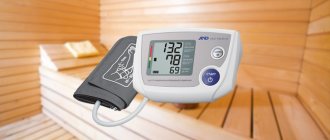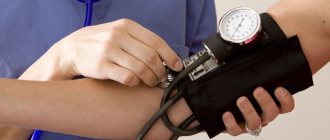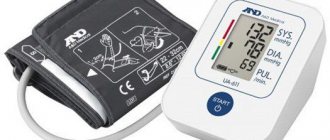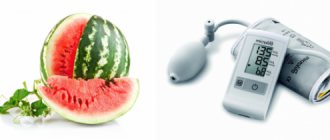“Why did you go to the bathhouse? Don’t you have a bath at home?” - Ippolit asked the unlucky Lukashin in the film “The Irony of Fate, or Enjoy Your Bath!”
In Soviet times, few knew that the bathhouse was a powerful physiotherapeutic procedure that could both improve human health and harm it. The director of the Institute of Health and Rehabilitation Sciences of NSU says Lesgafta, Doctor of Medical Sciences, Professor Andrey Kalinin .
— The bath procedure activates thermoregulation. When a person enters a steam room, his body temperature rises, blood vessels dilate, skin cleanses, and skin respiration intensifies. Together with sweat, electrolytes, metabolic products and excess fluid leave the body. Staying in a bathhouse enhances inhibitory processes in the central nervous system, causing a sedative (calming) effect. The endocrine system perceives “general inhibition” as stress and activates the function of the endocrine glands, increasing the production of hormones. Therefore, after a bath, a person experiences a feeling of relaxation and vigor at the same time.
Article on the topic
Steam for the “clean” public. How the first bathhouse appeared in Moscow The steam room is an excellent exercise machine for the heart and blood vessels. Studies have shown that bathhouse regulars have a lower risk of developing hypertension than those who bypass it. The sauna also has a beneficial effect on the respiratory system. Under the influence of heat, the bronchi expand, the frequency and depth of breathing increase, which activates heat transfer and compensates for the lack of oxygen in the internal organs.
Dousing yourself with cool water after a steam room deserves a separate discussion.
When immersed in cold water, the vessels first narrow (blood from the periphery rushes to the internal organs), and when the blood flow is directed in the opposite direction, they expand. During short-term douches, water does not have time to take away enough heat, but it has a powerful effect on the nervous system (increasing its tone, which allows you to remain calm in difficult situations) and on the immune system. However, the powerful physiotherapeutic bath effect can only be used if there are no contraindications.
Principles of exposure and therapeutic effect of the bath
Our grandparents loved to have a swim day. The procedure has a strong effect on the body, but at the same time brings great benefits. Warm, humid air causes you to sweat, and sweat releases toxic substances.
The bathhouse has a positive effect on a person:
- Thermoregulation. High temperature destroys viruses, germs and bacteria. Slows down the growth of malignant cells.
- Metabolism. Improves metabolism.
- Leather. Cleanses the skin of toxins and impurities.
- Ships. Temperature changes train blood vessels, making their walls strong. The heart muscles become stronger.
- Nervous system. Blood begins to circulate better due to the expansion of blood vessels. This has a relaxing effect on a person.
From the above we can conclude that the bathhouse is beneficial for human health.
But what should people with high blood pressure do? Will you have to give it all up because of higher rates? To understand whether patients with high blood pressure can visit a sauna or bathhouse, you need to understand the disease itself and reconsider your lifestyle.
No hammam, no plunge pool
But if the disease has already manifested itself, then contrast procedures should be avoided. Jumping from a hot steam room into a plunge pool and dousing your head with ice-cold beer is not for you. However, before starting the procedures, a competent bathhouse attendant will inquire about your blood pressure, allergies, and even check your pulse. Also, high humidity regimes, which can happen, for example, in a hammam or an unsuccessfully prepared Russian steam room, create a large load on the cardiovascular system.
However, there are cases when going to the bathhouse should be categorically refused. We are talking about obvious hypertension, which persists for many years, the presence of complex cardiac pathology or decompensation of any cardiac disease. Doctors strictly prohibit people with such diagnoses from going to the bathhouse and sauna, since staying in conditions of elevated temperature can pose a fairly serious threat to their life and health.
So, if you are “at risk”, but come to the bathhouse, don’t be a hero, ask for a steam room to be prepared especially for you, and enjoy the pool more. Well, if you love this exceptionally pleasant vacation, but have doubts about your health, then be sure to consult a good doctor.
The effect of bath procedures on blood pressure
A person who has never taken a bath before wonders whether exposure to hot steam causes or reduces hypertension? It all depends on the type of couple, because each of them affects the body in its own way. A steam bath with moist air and a dry sauna are two different phenomena. In either case, heat causes the human heart to beat, and as a result, blood pressure rises.
Heat causes the heart muscles to contract much more quickly. If you reduce the air humidity, the effect will be different. Some people cannot stand the conditions of a steam room and prefer a sauna. It is safer for high blood pressure. Low blood pressure is also a contraindication to visiting the sauna.
For hypertension
People suffering from symptoms of hypertension do not refuse to visit the sauna. A few minutes in a steam bath can affect your blood pressure and cause it to drop. Moreover, the decrease in value occurs smoothly or there is a sharp jump. Everyone's body is different, so it is impossible to predict exactly how the procedure will affect a patient with high blood pressure.
Changes in blood pressure may be accompanied by a number of symptoms:
- weakness;
- nausea;
- dizziness.
If this happens every time you take a bath, there is no need for further treatment.
People ignore such situations without asking whether they could negatively affect their health. If a hypertensive patient gets sick and loses consciousness, there is a high probability of injury from a fall. Therefore, people with hypertension are advised to limit the number of bath visits.
For hypotension
Excessive use of baths is also contraindicated for people with hypotension. If a person cannot give up the habit of mating with friends in a bathhouse, then after the procedure it is better to eat dark chocolate or drink sweet tea. True, if you have hypotension, visiting the steam room is also not recommended, but this condition is much safer. Warm air can cause blood pressure to drop rapidly to critical levels.
Basic recommendations to follow
People who visit the bathhouse should wear a felt cap on their head to protect them from overheating. Sudden temperature changes are not recommended. Immediately after visiting the steam room, you should not dive into the cool water of the pool. After swimming, it is not recommended to take a hot shower. With a sharp change in temperature, pressure often increases.
A person suffering from hypertension needs to monitor the ratio of temperature and humidity level in the room. If the humidity exceeds 80%, the optimal air temperature in the steam room should be no more than 50°C. At low humidity of 15%, the temperature limits increase to 90°C.
Patients who are concerned about their health should follow these recommendations:
- before visiting the steam room you should not drink alcohol;
- You should not take diuretic medications 20 hours before taking a steam bath;
- in case of hypertension, contrast procedures (wiping with cold snow, cool shower) are harmful;
- When visiting the steam room, you should not take medications that lower blood pressure.
Note! A traditional Russian steam room and a Finnish sauna have different effects on the body. The Finnish sauna can be called more gentle on health. In it, the pulse usually does not increase more than 120 beats per minute. In a humid, hot bath, the pulse rate can increase to 160 beats per minute even in a person without visible health problems, so a patient with hypertension is not recommended to stay in such a room for a long time.
Compatibility of hypertension and baths
Despite the prohibitions, a person has the right to visit the bathhouse. At the same time, you should remember about special rules, compliance with which will protect a person from negative consequences. Before visiting the steam room, you should measure your blood pressure. If they are normal, also listen to your body, there are no unpleasant sensations in it.
Physical weakness, headaches and nausea - it is better to postpone visiting the sauna until later. However, if the patient feels well, his condition can change at any time. To safely survive any changes in the body, it is worth having a first aid kit. Containers with medications should not be brought into the steam bath; they should be kept within walking distance.
When is a bath contraindicated for hypertensive patients?
The method and effectiveness of staying in the bathhouse depends primarily on compliance with the basic principles. To make this process safe, you need to know the main contraindications associated with using a sauna and avoid them.
These contraindications, including those for hypertension, include:
- all febrile states and acute phases of the disease;
- decompensating conditions of chronic illness;
- arteriosclerosis with organ damage;
- hypertension recorded above 200 torr with organ damage;
- age over 55 years, if the person has not visited the bathhouse before.
How to steam properly with hypertension
Dry air is easier for people with hypertension, so wait until it cools down before entering the steam room.
During heat treatment, the following rules should be taken into account:
- Stay in the room for no more than 5 minutes. After leaving the room, rinse with warm water.
- Just maintain a horizontal position.
- A calming and healing effect can be achieved with the help of an oak broom. It is steamed and the air is slowly distributed throughout the room.
Professionals strongly advise against staying indoors for long periods of time. It is better to divide a large period into several smaller ones.
The most suitable time intervals for inhalations:
- first - 2 minutes;
- second - 3 minutes;
- third 5 minutes;
- fourth 7 minutes;
- fifth - 2 minutes.
Each subsequent run is 1-2 minutes longer, the last one is the same as the first. Herbal tea supports thermoregulation in the body. It is advisable to choose linden flowers for brewing. Cover your shoulders with a towel and your head with a hat.
To protect a person from unforeseen situations, choose close friends to accompany you. They will monitor a person with hypertension and help him at the right time.
What are the benefits of a sauna?
The positive effect of dry sauna steam and high temperatures on the body is enhanced by dropping a few drops of essential oils onto hot stones. A warming procedure using infusions or decoctions of mint, eucalyptus or pine needles will help you relax, get rid of colds, headaches, relieve fatigue and stress from a difficult day. Dry steam provokes a state of artificial hyperthermia or fever.
The elevated body temperature is then part of the body's natural healing process and triggers the immune system.
Staying in the steam room for 10 minutes has a positive effect on movement coordination, energy metabolism and blood flow to all internal organs. The effect of a sauna on the skin, digestion and heart function is the same as that of a bath: the pores of the skin are cleansed, the work of the heart and blood vessels is activated, and the condition of the digestive system improves.
Hypertension and sauna have great compatibility: even with the second degree of disease, doctors often allow patients to undergo warm and pleasant procedures. Dry steam and lower temperatures have a beneficial effect on the functioning of the heart muscle and blood vessels.
Visiting the bathhouse and sauna depending on the stage of hypertension
This disease has three stages:
- First. The person feels well. Blood pressure goes beyond normal limits under the influence of provoking factors - overload, stressful situations, physical activity. At such moments it increases. When a person calms down, everything returns to normal and there is no need for treatment.
- Second. Blood pressure periodically increases. You can return to optimal values with the help of medications.
- Third. Blood pressure is constantly outside the normal range. Increased levels require constant medication. You should have a tonometer on hand to check your pressure gauges.
In the first case, you can visit the sauna regularly, but you should monitor your physical sensations. If a patient is diagnosed with second-degree hypertension, doctors do not recommend frequent visits to the steam room. Good health allows you to carry out thermal procedures. In the latter case, bathing is very undesirable, as it can harm a person.
Diet
As for the diet, patients with glaucoma should choose mainly dairy-vegetable foods.
Meat consumption for this disease, especially rich meat broths, should be limited. It's better to switch to vegetarian soups. It is necessary to limit salt and spicy seasonings, reduce fluid intake to one or one and a half liters per day.
Alcoholic drinks (including beer) must be completely avoided, you should not drink strong tea and black coffee, or eat large amounts of chocolate, because these products increase intraocular pressure.
Meals for glaucoma should be frequent, 4 or 5 times a day. It's worth eating in small portions. The last meal should be no later than two hours before bedtime.
Smoking with glaucoma is also strictly contraindicated. Particular attention should be paid to normalizing the functioning of the gastrointestinal tract and avoiding constipation, which can provoke an increase in intraocular pressure.
Strict adherence to these recommendations contributes to positive dynamics in the glaucoma process, of course, if you strictly adhere to the ophthalmologist’s instructions regarding drug treatment.











